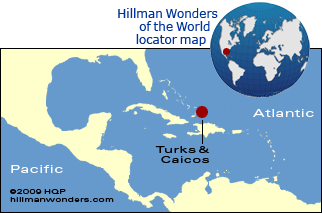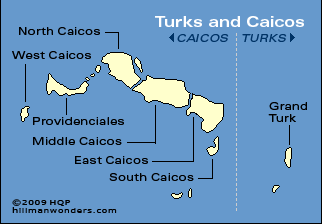Turks and Caicos
 Why the
Turks and Caicos
are special
Why the
Turks and Caicos
are specialThey are tailor made for divers, snorkelers and deep-sea sports fishermen - and for visitors seeking a more laid back and less touristed setting than found on most of the other major Caribbean Islands.
Turks and Caicos islands tips & insights
Not true Caribbean Islands
The Turks and Caicos sit in the Atlantic Ocean, just beyond the Caribbean Sea. I include these islands in my Caribbean Guide because they are considered "Caribbean" by most travelers and the tourism industry.
Don't expect lush tropical islands
Turks and Caicos islands are relatively dry. Only 60 millimeters (25 inches) of rain fall per year. You won't see the type of lush verdant landscapes found on Caribbean islands like Jamaica.
The two main Islands
The Turks & Caicos comprise several dozen islands (most are uninhabited). The two most significant are:
- Providenciales
It is the favorite of tourists and part-time residents. Locals call it "Provo". - Grand Turk
It's the capital city as well as the business and off-shore financial centers of the islands.
Global warming and tsunamis
They are issues here. The islands are flat, with low-lying hills. The highest point reaches just 40 meters (80 feet).
Geography
The Turks and Caicos comprise two distinct island groups, the Turks and the Caicos. The two occupy the southern end of a long archipelago (The Bahamas has the lion's share of that archipelago).
Beaches
You can easily find many beautiful white sand beaches kissed by turquoise waters in the Turks and Caicos. The most famous is Grace Bay Beach on Providenciales island.
Diving and snorkeling
The extensive coral reef system is highly rated by expert divers and snorkelers.
Population
The count is roughly 30,000. This does not count the many part-time residents.
Language
English is the official tongue.
Location Map




